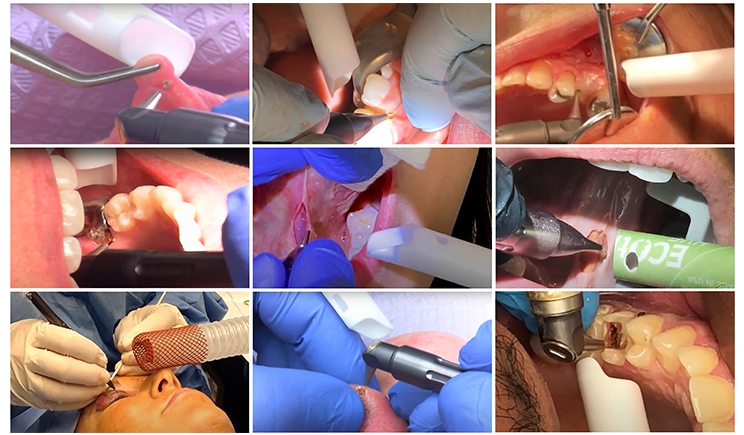
The ANSI Z136.3 Standard for Safe Use of Lasers in Health Care (2018 Edition) defines a laser plume as a non-beam laser hazard since it includes viral, bacterial, and other cellular and aerosolized particulates, as well as gaseous toxic compounds and other materials.
The standard does specify safety measures to mitigate these laser plume hazards, though, such as the mandatory use of a local exhaust ventilation (LEV) device including wall suction devices, high-volume evacuation devices, and mobile or portable smoke evacuators
These LEV devices should be equipped with a proper filter (defining filtration at 0.12 µm at 99.999% efficiency) and a wide aperture suction nozzle held as close as possible to the surgical site (no further than 2 inches per the Centers for Disease Control and Prevention) to safely remove the laser plume.
However, the standard does not address the safe removal of the laser plume when water spray is directed at it. Such water spray uses may disperse the laser plume out of the reach of the LEV device and reduce its efficacy.
Also, reviews by Harrel and Molinari, Emmons et al, and Harrel again of the mitigation of aerosol hazards generated by dental instruments don’t address mitigation techniques that comply with the ANSI Z136.3 Standard for the hazards of the laser plume dispersed by water spray.
Therefore, laser plumes can be safely removed in surgical laser uses that don’t utilize water sprays according to and in accordance with the standard. Clinicians who use dental lasers that use water sprays, however, should be aware that the standard does not address the safe removal of the laser plume dispersed by the water spray.
Dr. Vitruk held a variety of laser physics R&D positions prior to cofounding the LuxarCare-AescuLight-LightScalpel group of laser companies. His work contributed to the development of high-power atomic Xenon lasers and high-power, low-cost, “all metal” carbon-dioxide laser resonators for advanced commercial surgical and dental laser systems. He also has authored 10 patents, more than 50 papers, and three book chapters and is a member of the Institute of Physics. In 2017, he founded the American Laser Study Club, which helps dentists, physicians, veterinarians, and practice staff members to excel at efficient and safe medical laser applications. He can be reached at Peter@AmericanLaserStudyClub.org.
Related Articles
Lasers Can Play a Key Role in Improving Infection Control
Q&A: Dr. Samuel Low and Laser Dentistry
Dental Laser Meets Guidelines for Minimizing COVID-19 Transmission











